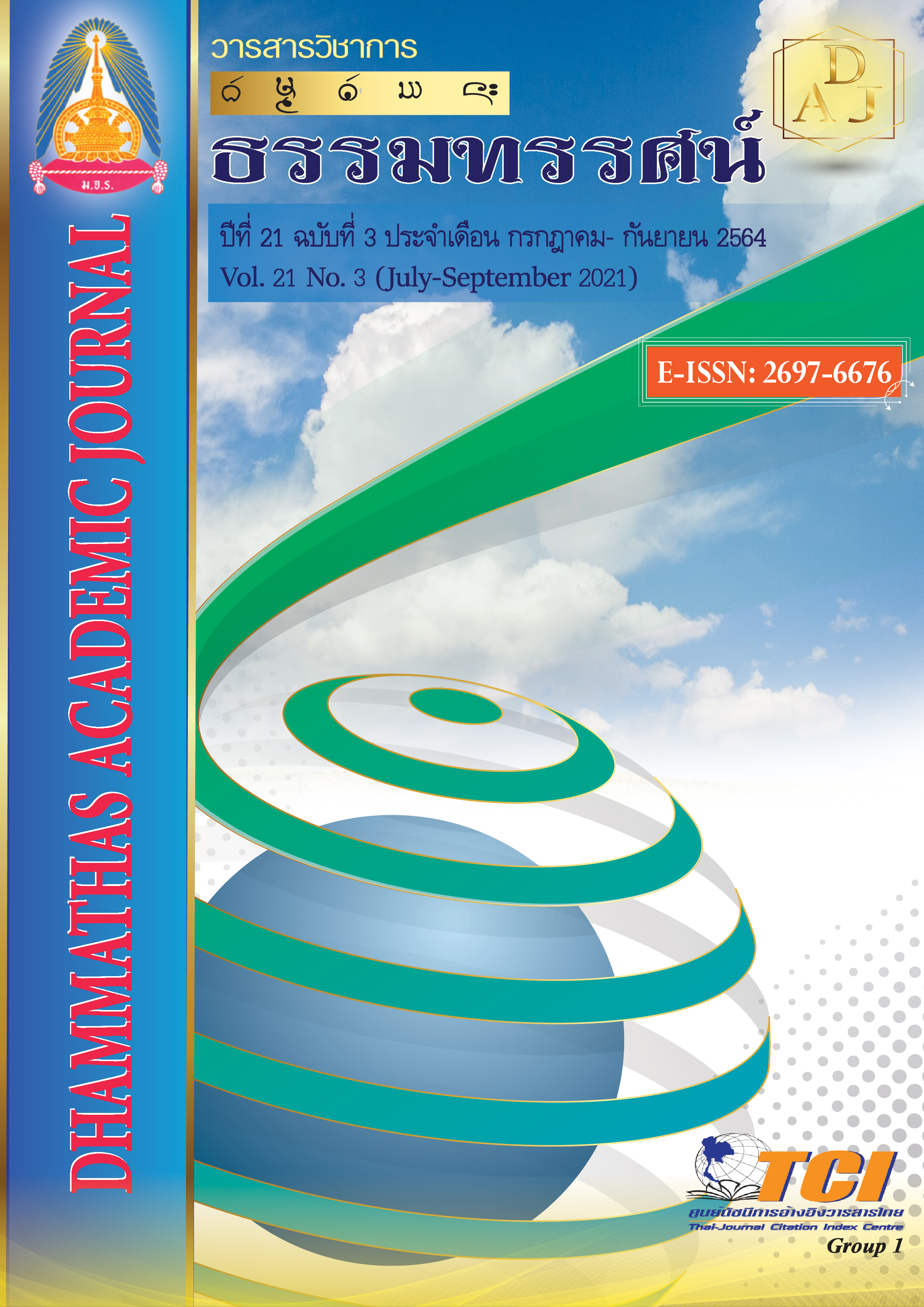A Comparative Analysis of the Nine-tailed Dog of Tai-Kadai and the Nine-tailed Fox in Chinese Folklore-Accepted Characteristics According to Human Perception
Main Article Content
Abstract
The purpose of this study is: 1) to provide a clear description of the nine-tailed dog and nine-tailed fox according to literary folklore, 2) to provide a comparative analysis of the primary characteristics of the nine-tailed dog and the nine-tailed fox in order to unveil the disparity between both, then provide a rational account of their acceptance according to human perception; where the scope of the research focuses on the nine-tailed dog in the Tai-Kadai and the nine-tailed fox in China. The research methodology implemented in this study includes a combination of qualitative research and documentary research which is divided into: 1) to explore and make a comparative analysis of the major characteristics of the nine-tailed dog and the nine-tailed fox in the selected literary works. 2) to provide a comparative analysis of the nine-tailed dog and the nine-tailed fox and the reasons for their acceptance according to different human perspectives, followed by an in-depth interview, then a conclusion.
The research result found that:
1. The nine-tailed dog as portrayed in literary work share a total of six primary characteristics: Domestication and taking the role of a pet, non-violent, not a threat to human beings, assisting human beings, honesty and loyalty, and possession of supernatural powers, where in terms of disparity, it was found that there were no other diverse characteristics. It was also discovered that the nine-tailed fox shared one common characteristic which was supernatural powers, where in terms of disparity a total of 16 characteristics were found.
2. The nine-tailed dog has been perceptually accepted by human beings due to their primary characteristics being of a friendly nature towards human beings and providing assistance, which has resulted in acceptance of appearance, reverence, and respect towards the nine-tailed dog. On the other hand, the nine-tailed fox was initially portrayed as a wild and fierce animal which ultimately influenced literary work like “The Classic of Mountains and Seas” which depicts the nine-tailed fox as wild and threatening towards humans. As for other works of literature such as “The Annals of Wu & Yue States of the late Spring & Autumn” and “Eternal Love”, it was found that the nine-tailed fox in these works of literature were no threat to human beings and ultimately both works of literature influence the acceptance in human perception of the nine-tailed fox.
Article Details
References
กัวผู๋. (2523). ซานไห่จิง. เซี่ยงไฮ้: บ้านหนังสือโบราณเซี่ยงไฮ้.
จันทิมา อัมฤทธิ์. (2530). การศึกษาเรื่องสุพรหมโมกขาสำนวนท้องถิ่นอีสาน. (วิทยานิพนธ์ศิลปศาสตรมหาบัณฑิต). กรุงเทพฯ: มหาวิทยาลัยศิลปากร.
จางเฉิง. (2560). แนวคิดที่แฝงไว้เกี่ยวกับจิ้งจอกเก้าหางจากสิ่งนำโชคจนกลายมาเป็นปีศาจ: กรณีศึกษาในสมัยราชวงศ์ฮั่นและถัง. วารสารสังคมศาสตร์หูเป่ย, 30(6), 125-129.
จางเสี่ยวหง. (2562). ลักษณะเริ่มแรกของจิ้งจอกเก้าหางจากในบทประพันธ์วรรณกรรมโบราณซานไห่จิง. วารสารวิทยาลัยอาชีวศึกษาและเทคนิคเมืองฮาร์บิน, 29(1), 170-172.
จ้าวจิ้ง. (2555). ลักษณะวิวัฒนาการลักษณะรูปลักษณ์ของจิ้งจอกเก้าหางในวรรณกรรมโบราณ. วารสารวิทยาลัยอาชีวศึกษาและเทคนิคอุตสาหกรรมหนานจิง, 12(3), 16-19.
ปิยา วัชระสวัสดิ์. (2547). ควายกินข้าวหมาเก้าหาง. กรุงเทพฯ: มติชน.
เมล็ดข้าวและหางสุนัข. (2507). กวางสี: วรรณกรรมและศิลปะกวางสี.
ราชบัณฑิตยสถาน. (2556). พจนานุกรม ฉบับราชบัณฑิตยสถาน พ.ศ. 2554. กรุงเทพฯ: ราชบัณฑิตยสถาน.
เริ่นจื้อเฉียง. (2557). การศึกษานิทานปีศาจจิ้งจอกโบราณของประเทศจีน. (วิทยานิพนธ์ศิลปศาสตรดุษฎีบัณฑิต). ซานตง: มหาวิทยาลัยซานตง.
สวี่จิ้งถง. (2554). วิวัฒนาการของลักษณะจิ้งจอกเก้าหางในเอกสารโบราณ. วารสารมหาวิทยาลัยโอเชียนประเทศจีน, 9(5), 124-128.
สวีลี่ลี่. (2558). การศึกษาภาพลักษณ์ของสุนัขจิ้งจอกในงานวรรณกรรมคลาสสิกของจีนและญี่ปุ่น. (วิทยานิพนธ์ศิลปศาสตรดุษฎีบัณฑิต). ฉางชุน: มหาวิทยาลัยจี๋หลิน.
สุจิตต์ วงษ์เทศ. (2546). ข้าวปลาหมาเก้าหาง. กรุงเทพฯ: มติชน.
หลี่เจี่ยนกั๋ว. (2545). วัฒนธรรมจิ้งจอกจีน. ปักกิ่ง: วรรณกรรมประชาชน.
อัมพวรรณ สุริยะไชย. (2546). การศึกษาวิเคราะห์เรื่องสุพรหมโมกขะหมาเก้าหาง. (วิทยานิพนธ์ศิลปศาสตรมหาบัณฑิต). เชียงใหม่: มหาวิทยาลัยเชียงใหม่.
อุมารินทร์ ตุลารักษ์. (2561). สิ่งศักดิ์สิทธิ์ มนุษย์ และสัตว์ในตำนานข้าวของชาวจ้วง สิบสองปันนา ประเทศจีนและชาวอีสานประเทศไทย. การประชุมวิชาการระดับชาติ, วันที่ 11-12 กุมภาพันธ์ 2559. สกลนคร: มหาวิทยาลัยราชภัฏสกลนคร.

